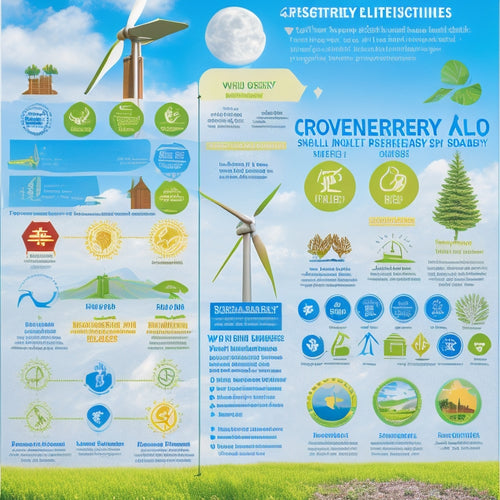Comfort and Sustainability: Choosing Eco-Friendly Athletic Gear
Share
You're likely unaware that your athletic gear is contributing to the staggering environmental toll of the fast fashion industry, but you have the power to change that by choosing eco-friendly athletic gear made from innovative, high-performance materials derived from recycled plastic waste. Sustainable activewear not only reduces waste and pollution but also provides exceptional comfort and performance. By opting for eco-friendly materials, you'll be supporting a circular economy and reducing the demand for virgin plastics. As you explore the world of sustainable athletic gear, you'll discover a whole new level of comfort, performance, and environmental responsibility waiting to be tapped.
Key Takeaways
• Eco-friendly materials, such as recycled plastic and organic cotton, provide exceptional comfort and performance while benefiting the environment.
• Sustainable athletic gear is designed to last, reducing waste and the need for frequent replacements, and often features natural fibers for breathability and comfort.
• Look for reputable eco-labels like GOTS and Oeko-Tex, which guarantee materials meet rigorous environmental and social standards, ensuring a more sustainable choice.
• Choosing gear made from recycled plastic supports a circular economy, reduces waste, and minimizes the demand for virgin plastics, contributing to a greener future.
• Prioritize brands that prioritize fair labor practices, reduce waste, and minimize their carbon footprint, supporting a more sustainable athletic wear industry.
Understanding Eco-Friendly Materials
Many eco-friendly materials used in athletic gear are derived from recycled plastic bottles, which would have otherwise ended up in landfills or oceans.
This innovative approach to sustainable manufacturing is made possible by advancements in Material Science. Through a process known as upcycling, plastic waste is transformed into high-quality, high-performance fabrics.
These eco-friendly materials are then used to craft athletic gear that not only benefits the environment but also provides exceptional comfort and performance.
When shopping for eco-friendly athletic gear, look for products bearing reputable Eco Labels, such as GOTS (Global Organic Textile Standard) or Oeko-Tex.
These certifications guarantee that the materials used meet rigorous environmental and social standards. By choosing gear made from recycled plastic, you're supporting a more circular economy and reducing the demand for virgin plastics.
As consumers, we've the power to drive change through our purchasing decisions. By opting for eco-friendly athletic gear, you're contributing to a more sustainable future for our planet.
Benefits of Sustainable Activewear
By choosing sustainable activewear, you're not only doing the planet a favor, but you're also treating your skin to a more comfortable and healthy workout experience. As a mindful shopper, you're likely drawn to eco-friendly gear that aligns with your values. The benefits of sustainable activewear extend beyond the environmental impact, directly affecting your workout performance and overall well-being.
| Benefit | Description |
|---|---|
| Breathability | Sustainable fabrics allow for airflow, keeping you cool and dry during exercise |
| Softness | Eco-friendly materials are often gentler on skin, reducing irritation and discomfort |
| Odor Resistance | Natural fibers and environmentally-friendly treatments prevent bacterial growth, keeping you fresh |
| Durability | Sustainable activewear is built to last, reducing waste and the need for frequent replacements |
| Confidence Boost | Wearing eco-conscious gear can enhance your workout experience, knowing you're contributing to a greener future |
As an eco-conscious consumer, you're part of a growing movement that prioritizes the planet's well-being. By choosing sustainable activewear, you're supporting brands that share your values, promoting a healthier, more responsible approach to athletic gear.
The Problem With Fast Fashion
Fast fashion's relentless pursuit of trendy, affordable apparel has led to a staggering environmental toll, with the sportswear industry being a significant contributor to the problem.
As you likely know, the production and distribution of cheap, trendy clothing have devastating consequences on the environment. You mightn't realize, however, that the sportswear industry is a significant player in this problem.
The constant influx of new styles and trendy athletic wear encourages unconscious consumption, leading to an overwhelming amount of fashion waste.
The staggering truth is that the average American generates about 82 pounds of textile waste per year.
This waste often ends up in landfills or incinerators, contributing to greenhouse gas emissions and pollution. In addition, the production process itself is a significant contributor to environmental degradation, with the textile industry being one of the largest polluters in the world.
Performance Meets Sustainability
As you explore the world of eco-friendly athletic gear, you'll find that performance and sustainability aren't mutually exclusive.
In fact, innovative brands are now harnessing eco-friendly materials that not only reduce environmental impact but also boost performance.
You'll discover that sustainable materials can enhance your athletic experience, from moisture-wicking fabrics to recycled polyester that's both durable and lightweight.
Eco-Friendly Materials Matter
You're likely familiar with the impressive performance features of your favorite athletic gear, but have you ever stopped to think about the environmental impact of the materials used to make them?
As you make the switch to eco-friendly athletic gear, vital to keep in mind is the materials used in their production.
When it comes to eco-friendly materials, supply chain transparency is pivotal. Look for brands that prioritize transparency in their supply chain, ensuring that their materials are sourced sustainably. This not only benefits the environment but also promotes fair labor practices.
Material innovation is another critical aspect of eco-friendly athletic gear. Brands are now incorporating innovative materials, such as recycled polyester and organic cotton, into their products.
These materials reduce waste, conserve resources, and decrease the carbon footprint of athletic gear production. By choosing gear made from these innovative materials, you're supporting sustainable practices that benefit both people and the planet.
Sustainable Performance Boost
When you slip on your eco-friendly athletic gear, you expect it to perform as well as its traditional counterpart, and innovative materials are making that a reality, allowing you to power through your toughest workouts while staying true to your values.
Today's eco-friendly athletic gear is designed to optimize your performance while minimizing its environmental impact.
With features like:
-
Energy Harvesting: Some gear incorporates technology that captures and converts your kinetic energy into electrical energy, which can power devices like your smartwatch or fitness tracker.
-
Biomechanics Optimization: Advanced materials and design elements work in harmony with your body's natural movements, reducing fatigue and improving overall performance.
-
Smart Fabric Technology: Moisture-wicking, breathable fabrics keep you cool and dry, while also providing compression support and enhanced flexibility.
These cutting-edge innovations guarantee that your eco-friendly gear not only feels great but also helps you perform at your best.
Whether you're a casual jogger or a competitive athlete, you can trust that your gear is working in harmony with your body and the environment.
Choosing the Right Fabrics
When selecting eco-friendly athletic gear, you'll want to weigh the type of fabric that's right for you.
You'll find natural fiber options like organic cotton, bamboo, and merino wool, which offer breathability and comfort.
Alternatively, synthetic alternatives made from recycled plastic waste can also provide high-performance features while reducing environmental impact.
Natural Fiber Options
With a multitude of natural fibers to choose from, selecting the right fabric for your eco-friendly athletic gear can be a challenging task. However, understanding the benefits of each natural fiber can make the decision-making process easier.
Some natural fibers you may want to explore:
Hemp: Known for its durability and UV resistance, hemp is an excellent choice for athletic gear that requires strength and longevity. Its moisture-wicking properties also make it ideal for activewear. Plus, hemp benefits the environment by requiring less water and pesticides than traditional crops.
Bamboo: Bamboo's durability and sustainability make it a popular choice for eco-friendly athletic gear. It's also naturally antibacterial, reducing odor-causing bacteria. Bamboo's breathability and moisture-wicking properties keep you cool and dry during intense workouts.
Organic Cotton: A more sustainable alternative to traditional cotton, organic cotton reduces the environmental impact of cotton production. It's also gentler on skin, making it perfect for sensitive athletes.
Synthetic Alternatives Exist
While natural fibers are a great starting point, you may find that synthetic alternatives better suit your athletic gear needs.
Synthetic fabrics have come a long way in terms of sustainability, and some options are even biodegradable. These innovative materials are made from biodegradable plastics, which can reduce the environmental impact of your athletic gear.
When choosing synthetic alternatives, consider those made from recycled materials. These fabrics reduce the need for fossil fuels, which are often used to produce traditional synthetic materials.
Look for brands that prioritize sustainability and transparency in their production processes. Some synthetic fabrics even mimic the performance of natural fibers, offering breathability, moisture-wicking, and quick drying properties.
Recycled Polyester in Action
You'll find recycled polyester in action in the outdoor apparel of eco-conscious brands like Patagonia and The North Face, where it's used to create durable, high-performance gear that's gentle on the planet. This innovative approach reduces the environmental impact of polyester production, which is a significant contributor to microplastic pollution and greenhouse gas emissions.
Recycled polyester is made from post-consumer plastic waste, such as plastic bottles, that are collected, sorted, and processed into raw materials. This closed-loop system reduces the need for virgin polyester production, conserving non-renewable resources and decreasing waste.
Conserves non-renewable resources like petroleum and natural gas.
Reduces greenhouse gas emissions by up to 70% compared to virgin polyester production.
Helps keep plastic waste out of landfills and oceans.
Natural Fibers for Athleisure
As you seek out athletic gear that's gentle on the planet, consider natural fibers like organic cotton, hemp, and bamboo, which are gaining traction in the athleisure market for their sustainable credentials and performance benefits.
These eco-friendly alternatives to synthetic fabrics offer a guilt-free workout experience.
Merino wool, for instance, is a natural temperature regulator, keeping you cool in summer and warm in winter. Its moisture-wicking properties and breathability make it an ideal choice for high-intensity activities.
Bamboo fabric innovations have also led to the creation of soft, lightweight, and quick-drying textiles perfect for yoga or running. Plus, bamboo requires minimal water and pesticides, reducing its environmental impact.
When shopping for natural fibers, look for certifications like Oeko-Tex or GOTS (Global Organic Textile Standard) to verify that the fabric meets rigorous sustainability standards.
Upcycling Old Athletic Gear
As you explore eco-friendly options for your athletic gear, consider giving new life to your old favorites.
You can repurpose old shoes into planters, bird feeders, or even dog toys, reducing waste and getting creative.
Repurpose Old Shoes
Transform your worn-out kicks into functional items like planters, bird feeders, or even dog toys, giving your old athletic gear a second life. By repurposing your old shoes, you're not only reducing waste but also getting creative and having fun.
-
Bird feeder: Fill the shoe with birdseed, attach a rope, and hang it from a tree for the birds to enjoy.
-
Planter: Clean and disinfect the shoe, then fill it with soil and your favorite plant.
-
Dog toy: Clean and disinfect the shoe, then fill it with treats or peanut butter for a fun and interactive game for your furry friend.
Transform Old Clothes
You can breathe new life into your old athletic clothes by upcycling them into functional items that reduce waste and spark creativity.
This Clothing Revamp is a great way to give your old gear a Fashion Reinvention, turning them into unique and eco-friendly items.
For instance, you can transform an old t-shirt into a reusable bag, a headband, or even a cleaning rag. Get creative and turn those worn-out leggings into a fun pair of shorts or a stylish scarf.
Upcycling old athletic gear isn't only good for the environment, but it's also a great way to express yourself and showcase your personal style.
You can use fabric paint, stencils, or embroidery to add a personal touch to your upcycled items. By upcycling, you're reducing the amount of waste that ends up in landfills and conserving natural resources.
Brands Leading the Eco-Way
Several pioneering brands are already making strides in sustainable athletic gear, setting a high bar for their competitors to follow.
As you explore the world of eco-friendly athletic gear, you'll come across brands that are truly leading the way. These Eco Pioneers aren't only reducing their environmental footprint but also inspiring others to do the same.
Some notable Sustainable Champions include:
-
Patagonia: Known for their environmentally-friendly production methods and sustainable materials, Patagonia is a pioneer in the outdoor apparel industry.
-
Reformation: This fashion brand is committed to sustainability, using environmentally-friendly materials, reducing waste, and implementing recycling programs.
-
Outerknown: Co-founded by surfer Kelly Slater, Outerknown is dedicated to creating sustainable, high-performance apparel that's both stylish and eco-friendly.
These brands are paving the way for a more sustainable future in the athletic gear industry. By supporting these eco-conscious brands, you're contributing to a movement that prioritizes the health of our planet.
Making Informed Purchasing Decisions
As you explore the world of eco-friendly athletic gear, making informed purchasing decisions is critical to supporting sustainable brands and reducing your environmental impact. By considering your personal values and shopping ethically, you can make a positive difference.
When deciding on athletic gear, consider the following factors:
| Factor | Why it Matters | Questions to Ask |
|---|---|---|
| Materials | Choose gear made from sustainable, recycled, or organic materials that reduce waste and minimize harm to the environment. | Are the materials used sustainable? Are they recycled or recyclable? |
| Production Process | Look for brands that prioritize fair labor practices, reduce waste, and minimize carbon footprint. | Are the workers involved in the production process treated fairly? Are there any certifications like Fair Trade or Organic? |
| End-of-Life | Consider the gear's entire lifecycle, from production to disposal. Opt for brands that offer recycling programs or encourage reuse. | What happens to the gear at the end of its life? Are there recycling options available? |
| Brand Transparency | Support brands that prioritize transparency, sharing information about their supply chain, materials, and production processes. | Are the brand's values and practices aligned with yours? Is the brand transparent about its operations? |
A Greener Athleisure Future
With the athletic wear industry poised for continued growth, it's crucial that brands and consumers alike prioritize eco-friendly practices to safeguard a greener athleisure future.
As you contribute to this growth, you're part of the Green Revolution, driving the demand for sustainable lifestyles.
Three ways you can contribute to a more eco-friendly athletic wear industry:
-
Support brands using recycled materials: By choosing brands that incorporate recycled materials into their products, you're encouraging sustainable manufacturing practices.
-
Opt for durable, long-lasting gear: Investing in high-quality, durable athletic wear reduces waste and the constant need for new, resource-intensive products.
-
Participate in clothing take-back programs: Many brands now offer take-back programs, allowing you to return used gear and keeping it out of landfills.
Frequently Asked Questions
Can I Still Get High-Performance Gear With Eco-Friendly Materials?
You can still get high-performance gear with eco-friendly materials, thanks to innovative supply chains and material innovations that prioritize sustainability without sacrificing performance, so you can feel good about your gear and your game.
Are Eco-Friendly Athletic Wear Options More Expensive Than Traditional Gear?
You might assume eco-friendly athletic wear options are more expensive, but premium pricing isn't always the case. Be wary of eco-guilt trips; many affordable, eco-conscious brands offer high-quality gear without breaking the bank.
Can I Recycle My Old Athletic Gear to Reduce Waste?
You can reduce waste by recycling or repurposing your old athletic gear through gear donation programs or textile recycling, keeping it out of landfills and supporting waste reduction efforts that benefit the community.
Do Natural Fibers Provide the Same Performance as Synthetic Fibers?
You'll find natural alternatives like bamboo, hemp, and organic cotton offering impressive performance, thanks to fiber innovations that enhance breathability, moisture-wicking, and durability, making them viable choices to synthetic fibers.
Are There Any Certifications to Look for in Sustainable Athletic Wear?
When shopping for sustainable athletic wear, you'll want to look for certifications like Bluesign, Oeko-Tex, and GOTS, which guarantee a responsible supply chain and material labels that certify eco-friendly practices throughout production.
Related Posts
-

Sustainable Solar Energy for Cost-Effective Living
Adopting sustainable solar energy isn't just eco-friendly; it's a smart financial strategy. You'll slash your monthly...
-

Renewable Energy Certifications for Businesses
Renewable energy certifications are essential for your business, showcasing your commitment to sustainability and enh...
-

High-Performance Energy-Efficient HVAC Systems
High-performance energy-efficient HVAC systems are essential for reducing energy consumption while improving indoor c...


